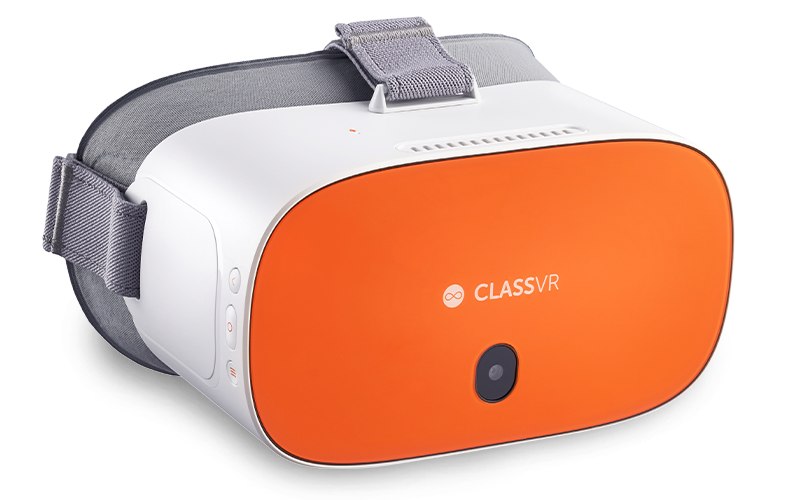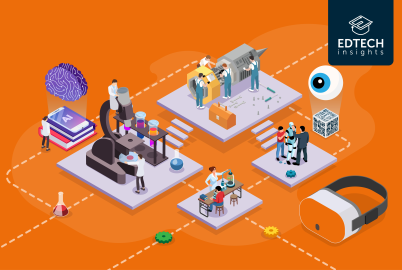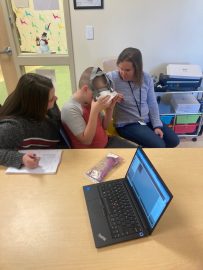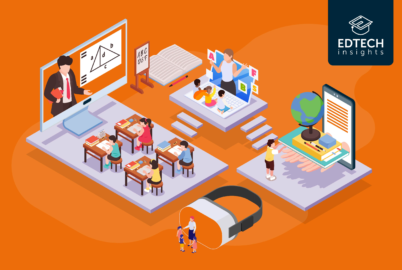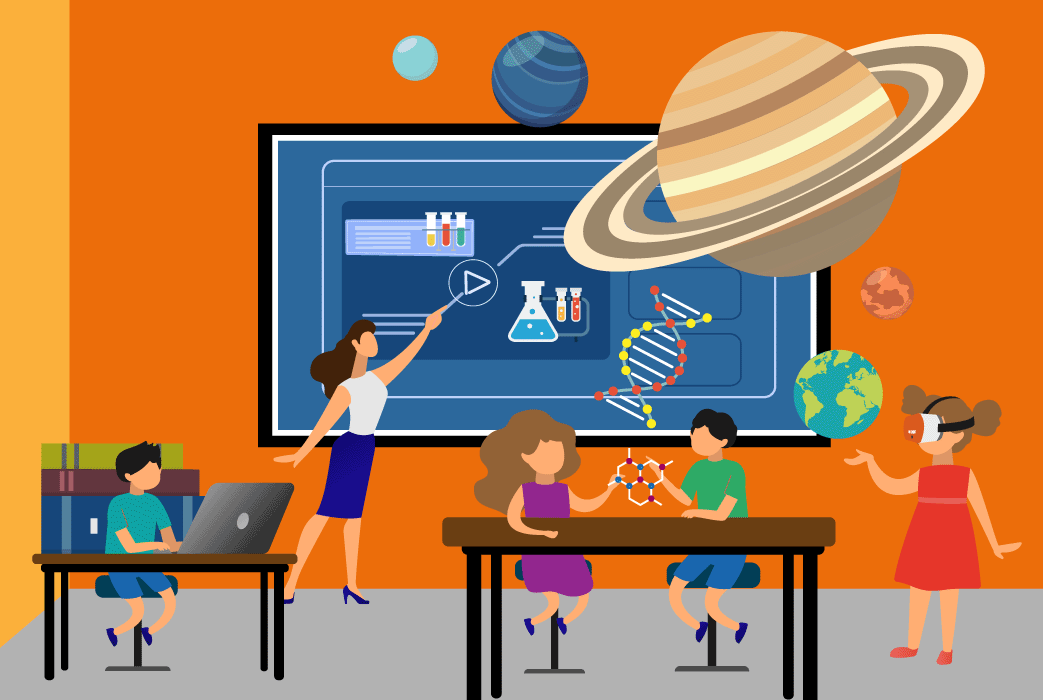
It has long been accepted in education theory that children learn best by taking an active role in their own learning rather than by being passive recipients of knowledge. Most teachers are more than familiar with the saying that they should be “the guide on the side” rather than “the sage on the stage.”
But in the real world, it’s not always easy to give students the rich, active learning experience that they need. The inertia of the “sage on the stage” model can be entrenched. As long ago as 1938, the famous education philosopher John Dewey wrote in Experience and Education that just moving away from the lecture model of teaching and toward a more hands-on education model wasn’t enough. Children need high-quality experiential learning that is well designed for their needs and aptitudes.
A skillfully crafted interactive classroom can be a great way to give children this truly beneficial active learning experience. In this teacher’s guide to interactive learning, we explore what an interactive classroom is and go into some practical interactive learning strategies for engaging students in the classroom.
Table of contents
What are interactive classrooms?
An interactive classroom is one where students learn by sensing and doing. Teachers shape their lessons so that students’ interactions with one another and their environment increase their skills and understanding.
Forms of interactions can include:
- Touching and manipulating real or virtual objects
- Collaboratively creating products, whether these are physical, virtual or intellectual (such as arguments)
- Performing experiments
- Discussing with classmates to reach answers and insights
- Writing on whiteboards, smartboards or papers on the wall to share ideas
- Exploring physical or virtual environments or scenarios
- Taking part in debates
- Giving instructions, such as lessons where teachers ask students to tell them what to do
- Educational games
- Project-based learning and multidisciplinary projects.
Benefits of interactive classrooms
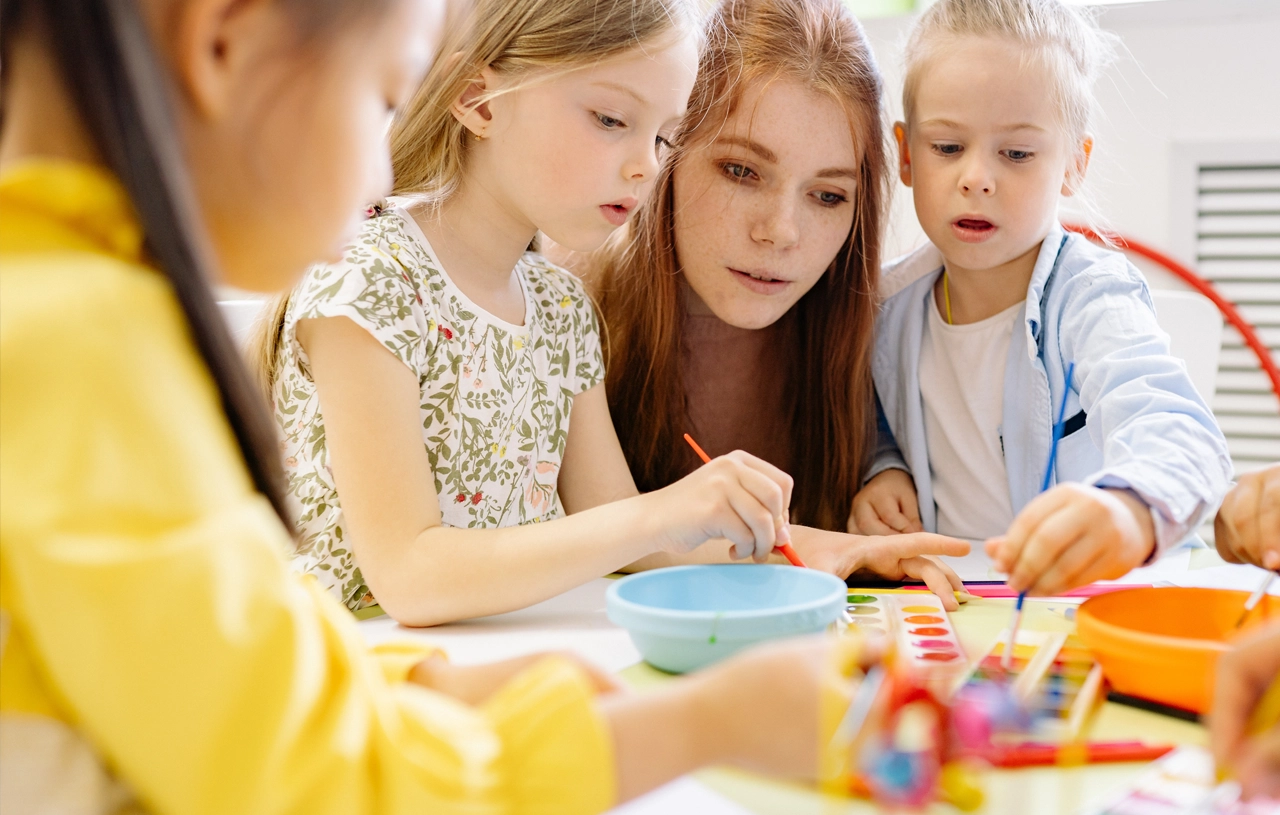
These approaches help children in numerous ways. Firstly, the active learning techniques in play here guide students to understand ideas in a deeper way and to remember them better.
Touching, listening to or interacting with people and things feels more real to students than words on a page. It can also help them to understand a fuller picture. For example, a nature walk to look at tadpoles gives students a sense of the local environment and animal habitats in a way that pictures of tadpoles in a book couldn’t. For children who have disabilities such as dyslexia, interactive visual learning can also be a wonderful way to impart concepts in a more accessible manner.
What’s more, interactive lesson plans are great for engaging students in the classroom. When interactions are happening all around you, it’s just much harder to miss out on learning. Children who are physical or visual learners can find that touching real or virtual objects is a much better fit for their learning style. Not to mention that activities where children are in charge are refreshing and interesting to them.
Students’ interactions with one another are also valuable for enhancing their social skills. Collaboration, teamwork and thoughtful debate are all crucial skills for us as human beings and for university and the workplace later on.
It’s also worth remembering Paulo Freire’s famous argument – the “banking” model of “depositing” knowledge in children’s minds inhibits freedom, equality and self-determination in society. In this sense, allowing children to steer their own learning and value their own opinions is crucially important.
Interactive lesson planning
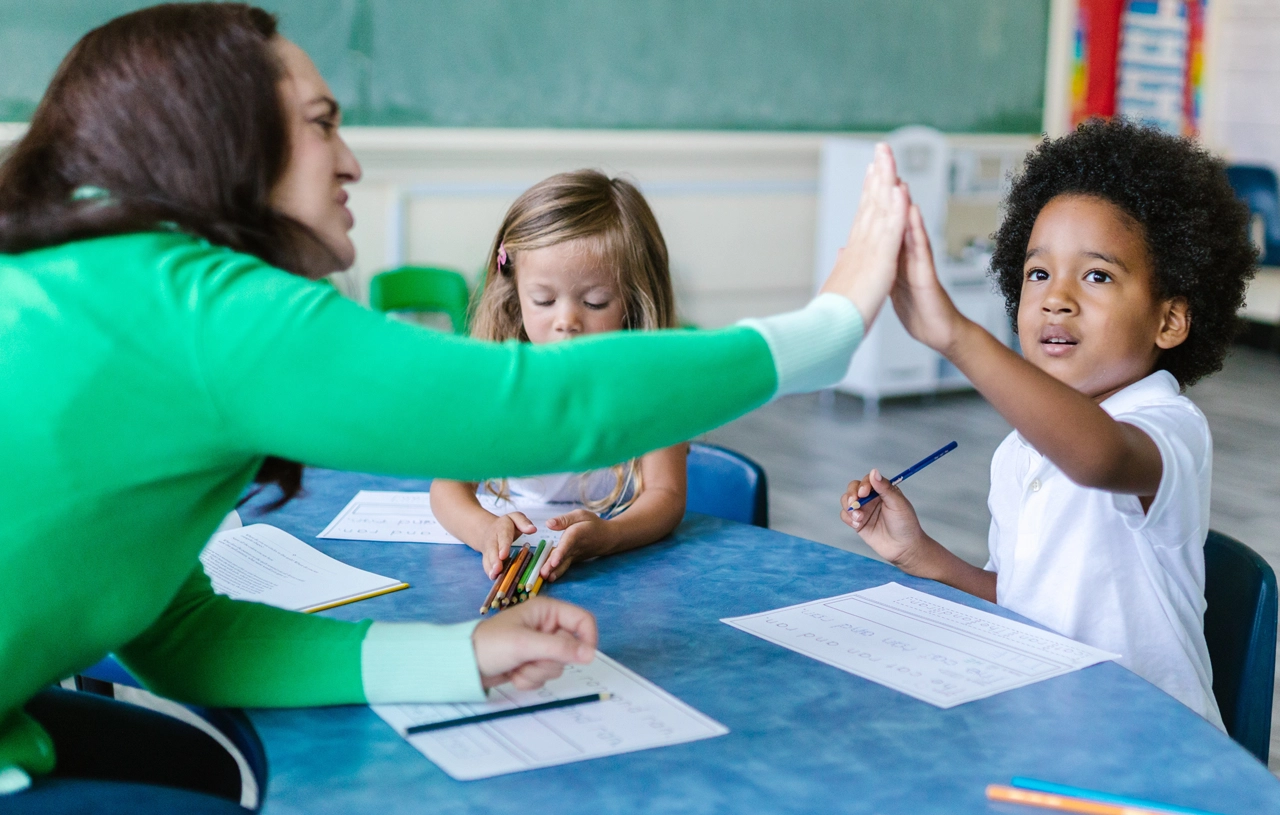
So how can you start planning lessons for your interactive classroom?
Whether your students will be using virtual reality technology in the classroom or building a low-tech bridge with ice lolly sticks, it’s always best to use backwards design in your lesson planning.
In other words, the starting point of an interactive lesson plan should always be – what do I want my students to learn and know? Then you can work backwards to explore what activities will produce the learning and skills you’re aiming to develop.
Generally, children do find it exciting to learn, especially in interactive environments. So, the fun aspect will naturally follow once children’s minds are buzzing and their imaginations are stimulated.
As such, the best student engagement strategies in interactive classrooms aren’t necessarily strategies to ensure children are having fun. They’re strategies that make sure children are really learning and not just passively watching. That means designing lessons that make sure all children are involved – touching, looking, sharing thoughts and interacting.
Once you’ve identified the learning goals of your lesson, here are some other points you should ask yourself when you’re designing your interactive lesson:
- How does this align with the curriculum?
- Who is steering the learning? If the lesson starts with the teacher steering the learning, can I release responsibility during the lesson so that children are in charge of their own learning activities by the end?
- What objects or visuals are children interacting with? What might they do? Is there anything I should make sure they don’t do?
- How are children interacting with one another? How can I ensure they interact respectfully?
- How can I set expectations for the learning activity to give children the freedom to learn actively while also staying within the boundaries of the lesson plan?
- How can I scaffold learning for students who need a bit more help? How can I let advanced learners take it a little further?
- If I’m using videos, music or other technologies, how can I make sure each activity swiftly follows the next with minimal downtime?
- How will I make formative or informal assessments during the lesson? Can I use technology to do this?
- How will this lesson play into summative or formal assessments later on?
Don’t forget to look into interactive lesson plans made by other teachers. There’s no need to start from scratch if you can learn from someone else’s successes.
Types of interactive lessons
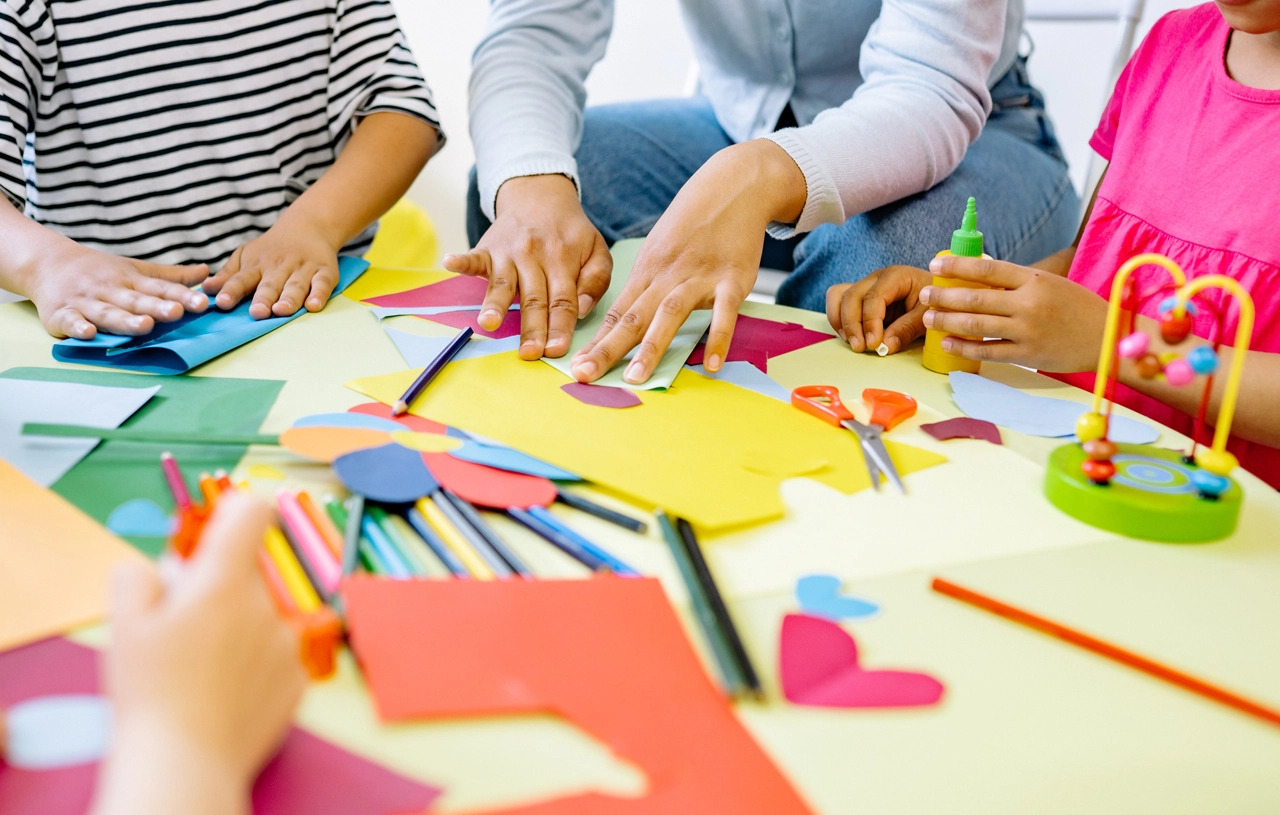
Ready to get started with interactive teaching strategies? We’ve created a rundown of just a few common types of interactive lessons. We hope these spark some ideas for active learning techniques that work toward engaging students in the classroom for you too.
The below lesson types are organised according to Bloom’s Taxonomy, starting with the foundational skills of “remembering and understanding” and working up to “creating.” Of course, in practice the skills involved are not so clear-cut, and children can create while remembering just as they can apply knowledge while creating.
Exploring, sensing and describing activities
Exploring, sensing and describing activities tackle the “remembering” and “understanding” levels of Bloom’s Taxonomy. These can be very simple, or they can use technology in the classroom to great effect.
The simplest examples are lessons that involve children touching objects. Children might enhance their descriptive skills by passing around objects like seashells or fossils and discussing what they see. They could then discuss in groups how these objects connect to concepts they’ve learned, such as how the fossil was created or how seashells can become sedimentary rock.
Options that involve more moving around would be walking around in nature around the school, or even walking around within the school or classroom. For example, children might make guesses about how long a hallway is and then measure it with a measuring wheel to get the answer, which would help them to get a sense of how long a metre is.
Augmented reality and virtual reality as interactive educational tools can really shine here too, letting students experience environments that are unfamiliar and new. A virtual visit to the Pyramids of Giza or the opportunity to hold cells in their hand through augmented reality can let children see and understand concepts and distant places and times in a deeper way.
A quiz show format for revision is also a fun way to enhance students’ recall and understanding. There are many apps, too, that incorporate technology in the classroom to gamify learning.
Discussing and debating activities
Interactive classrooms can also be a great way to enhance children’s “analysing” and “evaluating” skills within Bloom’s Taxonomy.
Mock trials are a very strong technique in literature and history classes for allowing children to get really excited about debating and using logical arguments. You can try putting fictional characters on trial. For example, how about organising students into groups to prosecute and defend Friar Lawrence as being responsible for Romeo and Juliet’s deaths? You can also put historical figures on trial. For instance, did Henry IV have a fair claim to the throne, or was he a usurper?
A virtual reality environment can make these trials even more vivid, too. Children can even dress up if they like.
Class discussions in general also fall within this category. To ensure that class discussions don’t leave out children who are quieter, try creative lessons plans such as “silent discussions” where children write their thoughts on papers around the room dedicated to different topics.
Another option is to incorporate visuals and discussion. You can show students an image or video, then discuss or debate events that were shown. In a case study lesson plan, for example, you could show students a video explaining a problem that needs to be addressed, and then guide them to create a case study exploring ways to address the problem. Or show students a video of transportation problems in a city and let them evaluate the ecological impacts of different solutions such as bridges, buses and trains.
Creating activities
In the 2001 revised Bloom’s Taxonomy, the highest level of educational objective is “creating.” Of course, creation is a natural fit in an interactive classroom.
Students can create and act out small scenes of their own. Writing and acting “cut scenes” or extra scenes from literature is popular among children and helps them get even more engaged in the story.
Project-based learning also falls within this domain. Children might design and create a product, then create an advertisement explaining why the product meets a need specified in the brief. If children are building a machine, they might want to use augmented reality to explore how engines work. Or why not use virtual reality to create a fantasy environment for their advertisement? Here, technology in the classroom really lets children use their creativity to the utmost and feel that they’re creating a grown-up, serious product.
Considerations and overcoming challenges
As in all lesson design, there are considerations and potential challenges to keep in mind.
One is that children who are watching videos or looking at their environment will be focusing on having fun and not necessarily thinking about the specific topics in the lesson. You can prevent this by giving students particular things to look for and a reason to look for them. Perhaps they’re going to write or draw a report about what they saw or did, for example.
It's also important to set expectations ahead of time to ensure that children’s behaviour is respectful of the space and of one another. This is even more important when technology in the classroom is in play and tech could be damaged. So, before you start interactive lessons, you may want to briefly run down a list of expectations. Likewise, for debates and discussions, set expectations about allowing other children to speak or responding respectfully when disagreeing.
Lastly, it’s crucial to remember the importance of accessibility, equity and inclusivity when employing interactive educational tools. If a blind student can’t experience the visual elements of an interactive classroom, ensure that you provide a description of what is being seen and include lots of audio and tactile elements. And if you’re taking students virtually to another place in the world, of course you’ll emphasise the importance of respect in this virtual visit to another culture.
Interactive teaching: a summary
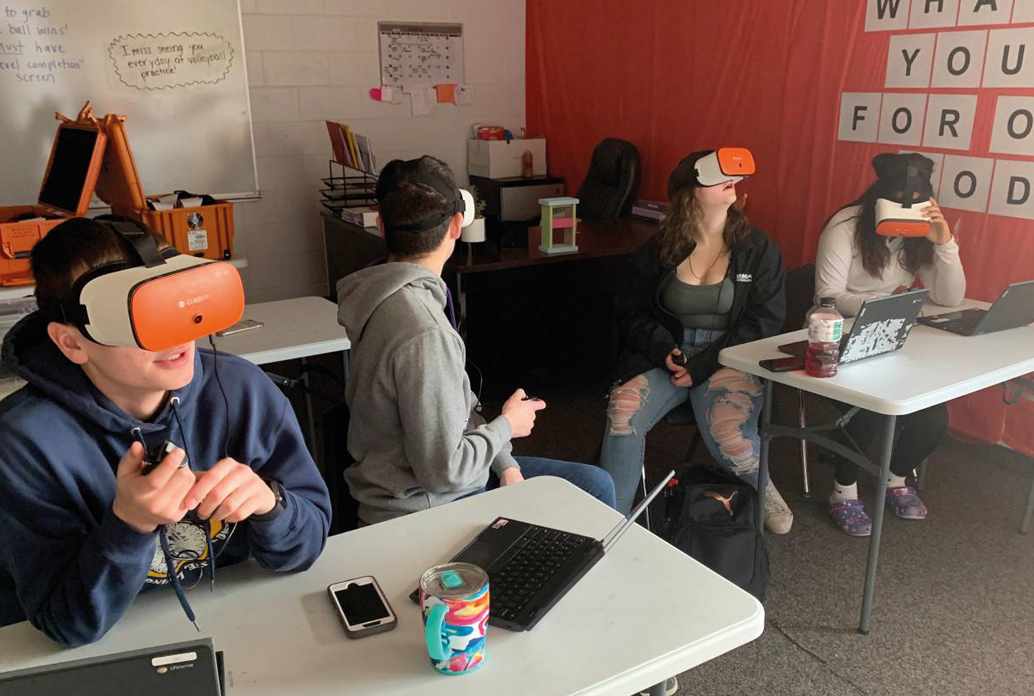
There are so many ways of engaging students in the classroom through interactive teaching strategies. You can use the things physically around you in the room, or explore outer space and molecules with augmented and virtual reality. And while your students are interacting with one another and the lesson elements, they’re also developing their social skills and self-assurance – and learning a lot too!
We hope this teacher’s guide to interactive learning has sparked a few great ideas for active learning techniques and student engagement strategies that will be helpful for you. If you have a fantastic idea that we haven’t discussed here – try it out! If your students are learning while actively sensing, thinking and doing in the classroom, then you’re doing interactive teaching right.
